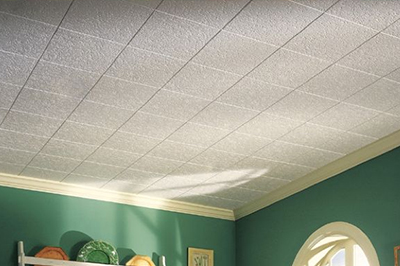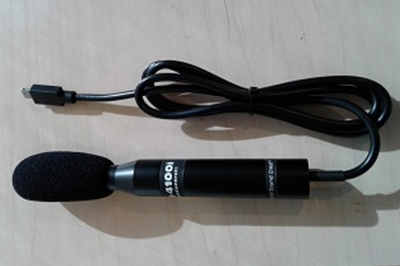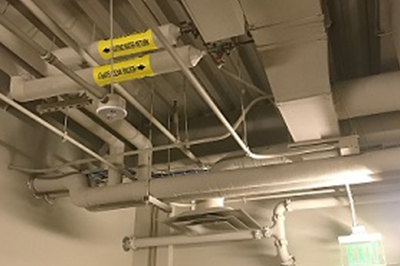Acoustic Extra Features
Acoustic Extra Features
Materials and Treatments (MT)
From the supporting literature (linked above), the school building’s envelope impacts the acoustic comfort of classrooms. The choice of materials for classroom walls and floors and their treatment plays a role in determining classroom acoustic comfort. The regularity of maintenance may depend on the building material used but it is important that classrooms/school building be properly maintained for optimum acoustic, thermal and lighting performance.
Acoustic Control (AC)
From the supporting literature (linked), the importance of sound control in classrooms is key to students achievements. One significant observation was the association between sound and visual. The control of classroom acoustic is key to students achievements and behavior.
Acoustics and Student Outcomes (ASO)
The relationship between noises existed in classrooms and student outcomes.
From the supporting literature (linked above), it was observed that noise in the built environment impacts students outcomes. It was also revealed that uncontrollable classroom noise affects students health.
Acoustic Condition (ACn)
Acoustic condition according to the noise and sound produced.
From the supporting literature (linked above), to achieve good classroom acoustic comfort for students, there must be proper sound conditions. The necessary acoustic conditions relate to generation, transmission, and reception of sound.
School Facility (SF)
Schools facility condition and noises produced in classrooms.
From the supporting literature (linked above), the physical properties of school buildings can affect teaching and learning by generating noise. These include space configuration, tools, equipment, and furniture used in classrooms. The mechanical system put in place also plays a major role classroom noise.
Reverberation (R)
The reverberation of produced sounds (echo) in classrooms.
From the supporting literature (linked), echoing or prolonged sound comes from inside and outside the classroom. Sources of resounding noise include bell system, equipment, students conversation, playground, streets, vehicles, trains, and aircrafts. Building materials also contribute to background noise and reverberation. A study revealed that reverberation times and background noise level were higher during classroom instruction (occupied space) than in an unoccupied classroom. Reverberation times are measured based on ISO 3382–1975 standard, and Rapid Speech Transmission Index (RASTI) values in accordance to IEC 268–16.
Acoustic and Healthy Learning Environment (AHLE)
The association of acoustic, healthy learning environment, and green school buildings.
From the supporting literature (linked), environmental noise impacts students performance in schools. Prolonged exposure to traffic noise impacts students and teachers concentration level, distraction is also high and leads to increased blood pressure.
References
1. ANSI (American National Standard Institute) (2010). “ANSI/ASA S12.60-2010/Part 1 American National Standard/ Acoustical Performance, Criteria, Design requirements, and Guidelines for Schools.” Acoustical Society of America, New York.
2. Archwamety, T. (2015). A Spatial Distance Explanation of the Relationship between Class Size and Achievement. วารสาร วิธี วิทยาการ วิจัย (Journal of Research Methodology: JRM), 13(2), 99-123.
3. Asdrubali, F., Schiavoni, S., & Horoshenkov, K. V. (2012). A review of sustainable materials for acoustic applications. Building Acoustics, 19(4), 283-311.
4. Bailey, J. A. (2009). A synthesis of studies pertaining to building conditions, student achievement, student behavior, and student attitude (Doctoral dissertation). Virginia Polytechnic Institute and State University, Virginia Beach, Virginia.
5. Barrett, P., Zhang, Y., Moffat, J., & Kobbacy, K. (2013). A holistic, multi-level analysis identifying the impact of classroom design on pupils’ learning. Building and Environment, 59, 678-689.
6. Barrett, P., Davies, F., Zhang, Y., & Barrett, L. (2015). The impact of classroom design on pupils’ learning: Final results of a holistic, multi-level analysis. Building and Environment, 89, 118-133.
7. Blackmore, J., Bateman, D., Loughlin, J., O’Mara, J., & Aranda, G. (2011). Research into the connection between built learning spaces and student outcomes: Literature Review. Department of Education and Early Childhood Development, State of Victoria.
8. Bronzaft, A. L., & McCarthy, D. P. (1975). The effect of elevated train noise on reading ability. Environment and behavior, 7(4), 517-528.
9. Bronzaft, A. L. (1981). The effect of a noise abatement program on reading ability. Journal of environmental psychology, 1(3), 215-222.
10. Brown, Z. B. (2009). Occupant comfort and engagement in green buildings: Examining the effects of knowledge, feedback and workplace culture. The University of British Columbia, Vancouver, BC.
11. Crandell, C. C., & Smaldino, J. J. (2000). Classroom acoustics for children with normal hearing and with hearing impairment. Language Speech and Hearing Services in Schools, 31(4), 362-370.
12. Cohen, S., Evans, G. W., Krantz, D. S., & Stokols, D. (1980). Physiological, motivational, and cognitive effects of aircraft noise on children: Moving from the laboratory to the field. American psychologist, 35(3), 231.
13. Cohen, S., Krantz, D. S., Evans, G. W., Stokols, D., & Kelly, S. (1981). Aircraft noise and children: Longitudinal and cross-sectional evidence on adaptation to noise and the effectiveness of noise abatement. Journal of Personality and Social Psychology, 40(2), 331.
14. Deverell, R., Goodhew, S., Griffiths, R., & De Wilde, P. (2009). The noise insulation properties of non-food-crop walling for schools and colleges: A case study. Journal of Building Appraisal, 5(1), 29-40.
15. Dockrell, J. E., & Shield, B. (2004). Children’s perceptions of their acoustic environment at school and at home. The Journal of the Acoustical Society of America, 115(6), 2964-2973.
16. Duffy, P. M. (1992). Classrooms and their users: A conceptual mapping of research on the physical environment of schools ( school environment). unpublished doctoral thesis. Pennsylvania State University. Pennsylvania.
17. Duyar, I. (2010). Relationship between school facility conditions and the delivery of instruction: Evidence from a national survey of school principals. Journal of Facilities Management, 8(1), 8-25.
18. Earthman, G. I. (2002). School facility conditions and student academic achievement. UCLA’s Institute for Democracy, Education, & Access.
19. Earthman, G. I. (2004). Prioritization of 31 criteria for school building adequacy. Baltimore, MD: American Civil Liberties Union Foundation of Maryland.
20. Evans, G. W., & Maxwell, L. (1997). Chronic noise exposure and reading deficits: The mediating effects of language acquisition. Environment and behavior, 29(5), 638-656.
21. Everest. F.A (1989)] The Master Handbook of Acoustics. TAB Books, Blue Ridge Summit, PA.
22. Ford, A. (2007). Designing the sustainable school. Australia: images publishing group pty ltd.
23. Fukuchi, T., & Ueno, K. (2004). Guidelines on acoustic treatments for school buildings proposed by the Architectural Institute of Japan. Proc. 18th Int’l Cong. Acoust.(Kyoto), 2, 909-910.
24. Guy, R. (2009) Acoustics in the Built Environment. In F. Haghighat & J.-J. Kim (Eds.), Sustainable Built Environment (Vol. 1, pp. 405 -). Oxford, United Kingdom: EOLSS/ UNESCO.
25. Haghighi, M. M., Chiao, L. E., & Mohd, M. B. (2012). Effect of Acoustic on Students’ Performance in Secondary Classroom Environment: A Review. International Journal of Modern Engineering Research (IJMER), 2(4), 2557-2560.
26. Harris, C. M. (1955). Acoustical properties of carpet. The Journal of the Acoustical Society of America, 27(6), 1077-1082.
27. Hyatt, C. L. (1983). The effect of jet aircraft noise on student achievement and attitude toward classroom environment. Unpublished doctoral thesis. Seattle University.
28. Iannace, G., Ciaburro, G., & Maffei, L. (2010, June). Effects of shared noise control activities in two primary schools. In INTER-NOISE and NOISE-CON Congress and Conference Proceedings (Vol. 2010, No. 8, pp. 3412-3418). Institute of Noise Control Engineering.
29. Knirk, F. G. (1970). Acoustical and Visual Environments Affect Learning. Audiovisual Instruction, 15(8), 34-35.
30. Kristiansen, J., Persson, R., Lund, S. P., Shibuya, H., & Nielsen, P. M. (2013). Effects of classroom acoustics and self-reported noise exposure on teachers’ well-being. Environment and Behavior, 45(2), 283-300.
31. Laird, D. A. (1930). The effects of noise: A summary of experimental literature. The Journal of the Acoustical Society of America, 1(2A), 256-262.
32. Lukas, J. S., Dupree, R. B., & Swing, J. W. (1981). Effects of noise on academic achievement and classroom behavior (No. FHWA/CA/DOHS-81/01 Final Rpt.).
33. “McGuffey, Carroll W. (1982). “Facilities,” Chapter 10, Herbert Walberg (ed.) Improving educational standards and productivity. Berkley: McCutchan Publishing Corp.
34. Mendell, M. J., & Heath, G. A. (2005). Do indoor pollutants and thermal conditions in schools influence student performance? A critical review of the literature. Indoor air, 15(1), 27-52.
35. Oral, G. K., Yener, A. K., & Bayazit, N. T. (2004). Building envelope design with the objective to ensure thermal, visual and acoustic comfort conditions. Building and Environment, 39(3), 281-287.
36. Pekkarinen, E., & Viljancn, V. (1991). Acoustic conditions for speech communication in classrooms. Scandinavian audiology, 20(4), 257-263.
37. Sabine, W. C. (1964). Collected Paper on Acoustic, New York: Dover Publications
38. Sala, E., & Viljanen, V. (1995). Improvement of acoustic conditions for speech communication in classrooms. Applied Acoustics, 45(1), 81-91.
39. Sato, H., & Bradley, J. S. (2008). Evaluation of acoustical conditions for speech communication in working elementary school classrooms. The Journal of the Acoustical Society of America, 123(4), 2064-2077.
40. Schafroth, T. R. (1977). Control of the Acoustical and Visual Concepts in Education (Doctoral dissertation, University of Wisconsin).
41. Shield, B., Conetta, R., Dockrell, J., Connolly, D., Cox, T., & Mydlarz, C. (2015). A survey of acoustic conditions and noise levels in secondary school classrooms in England. The Journal of the Acoustical Society of America, 137(1), 177-188.
42. Tanner, C. K. (2009). Effects of school design on student outcomes. Journal of Educational Administration, 47(3), 381-399.
43. Tanner, C. K. (2014). Green School Characteristics, Sustainability, and Student Learning. Marketing the Green School: Form, Function, and the Future, Information Science Reference, Hersey, PA, 25-37.
44. Uline, C., & Tschannen-Moran, M. (2008). The walls speak: The interplay of quality facilities, school climate, and student achievement. Journal of Educational Administration, 46(1), 55-73.
45. Zentall, S. S., & Shaw, J. H. (1980). Effects of classroom noise on performance and activity of second-grade hyperactive and control children. Journal of educational psychology, 72(6), 830.









